Woodpeckers are a common sight in South Carolina. There are many common species, like the downy woodpecker and pileated woodpecker. By the way, pileated woodpeckers are the largest species here. But just looking at the size is not enough to identify them accurately.
Some woodpecker species are friendlier than others. And some can even be seen feeding at bird feeders in people’s backyards.
And to enrich your knowledge of woodpeckers, we have crafted this article in detail. Here are all the species of woodpeckers you can see if you live in South Carolina.
Commonly Found Woodpeckers in South Carolina
Across South Carolina, you can spot 8 different species of woodpeckers. Some of them can be seen all through the year. However, the best time to see one is during summer or spring.
1. Downy Woodpecker

Scientific Name: Picoides pubescens
Wingspan: 10 to 12 inches
Height: 5.5 to 7.1 inches
Weight: 0.74 – 1.2 ounces
Out of all the woodpeckers in South Carolina, you have the highest chance of spotting a downy. These adorable little woodpeckers are the most common. Actually, you might even be able to spot one in your backyard.
Downy woodpeckers are very comfortable around us. I often see some Downys snooping around my backyard and feeding from my bird feeders. Also, these birds do not migrate like some other species. Which means most of them are here all year round.
So, how do these birds look? The easiest way to spot a downy is to notice the bird’s size. Downy woodpeckers are one of the smallest species in South Carolina. They also have a white patch of feathers that go right along the middle of their backs, sort of like racing stripes.
2. Hairy Woodpecker

Scientific Name: Leuconotopicus villosus
Wingspan: 13 to 17 inches
Height: 9 to 9.5 inches
Weight: 1.5 to 3.5 ounces
Hairy woodpeckers are much larger and have bigger bills than downys. However, they look strikingly similar to downy woodpeckers. Unless you are an experienced bird watcher, it can be quite difficult to tell them apart.
Moreover, hairy woodpeckers are common in South Carolina since they are residents here. I often see them being a little adventurous and feeding from my bird feeder.
Even I have to squint a little to tell whether it is a hairy or downy woodpecker. There are fewer hairy woodpeckers than downy woodpeckers in South Carolina, though. These birds enjoy foraging for food in forests or dead trees.
3. Red-bellied Woodpecker
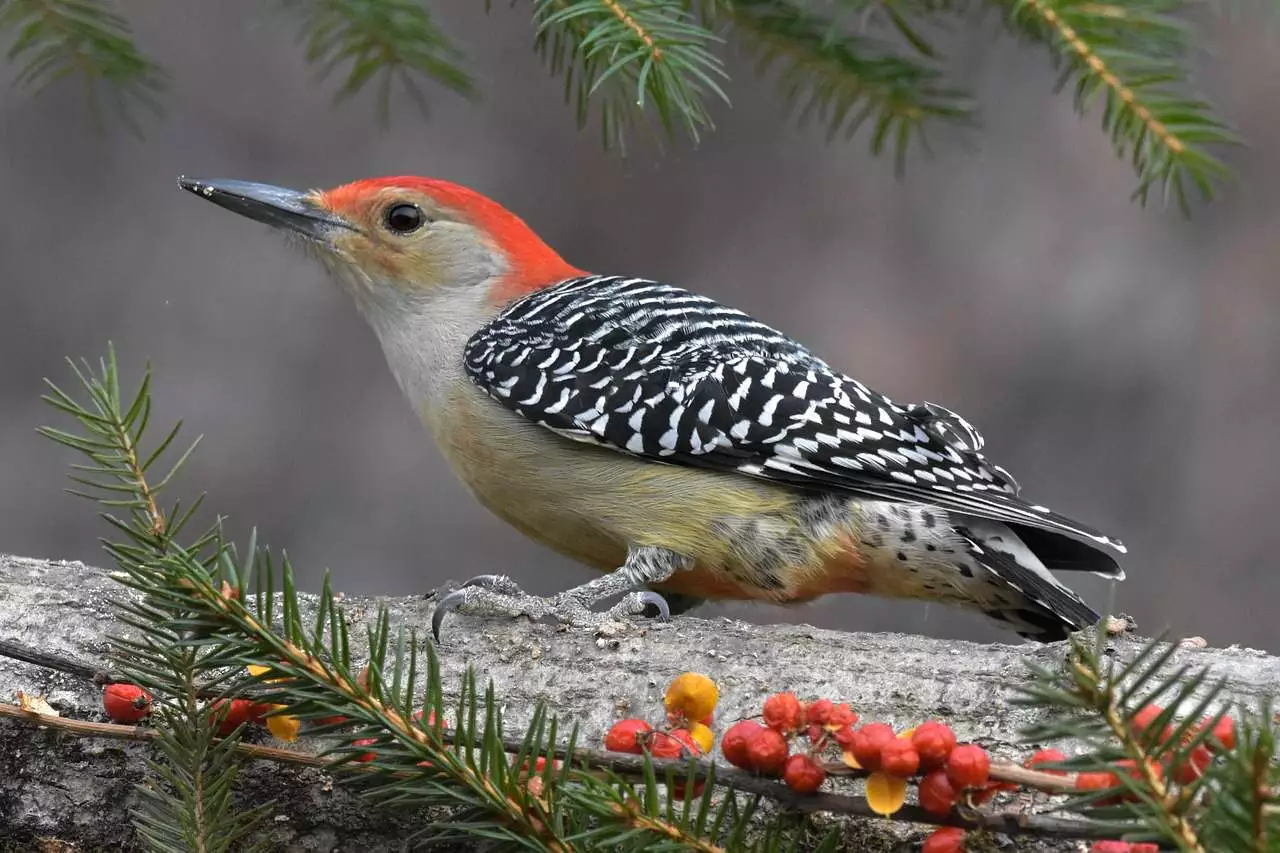
Scientific Name: Melanerpes carolinus
Wingspan: 15 to 18 inches
Height: 9 to 10.5 inches
Weight: 2 to 3 ounces
You would think for a woodpecker that is named red-bellied, looking at their bellies would be a good way of identifying them. Well, not quite. Their bellies have a very light hue of pale red.
So, it is harder to spot one if you just rely on the color of their bellies. Instead, looking at the head is the best way to identify these birds. Red-bellied woodpeckers have a mohawk-like red patch on their heads.
These birds are also very aggressive towards other birds when competing for food. They regularly dominate the bird feeders in people’s backyards here in Southern Carolina.
Red-bellied woodpeckers are also perhaps one of the most vocal species of woodpeckers. They make various interesting sounds to communicate, like chuckles, trills drumming sounds on trees.
4. Red-headed Woodpecker
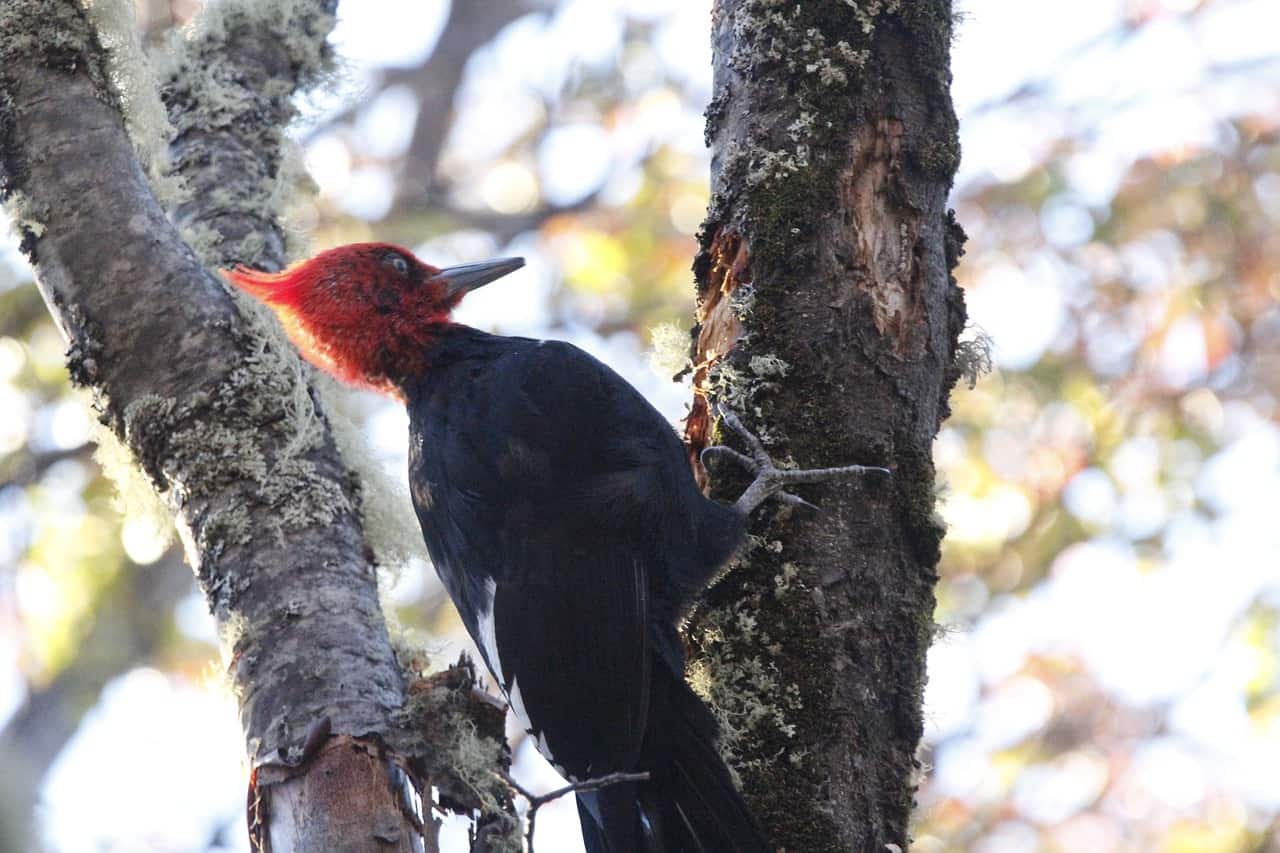
Scientific Name: Melanerpes erythrocephalus
Wingspan: 16 to 17 inches
Height: 7.5 to 9.8 inches
Weight: 2 to 3.5 ounces
These woodpeckers are very striking to look at. They have bright red heads with completely white bellies. Additionally, their back is black. This stark contrast makes them one of the easiest woodpeckers to identify in South Carolina.
Although they are sometimes seen around bird feeders, it is not that common for them to visit people’s backyards. I, for one, do not see them too often in my backyard.
They would much rather forage and hunt insects. Red-headed woodpeckers are also very agile hunters. They can swoop in and catch insects mid-air.
Another interesting thing they do is they often store food in small cracks and crevices. Then they will cover their stash with tree bark or leaves to protect it.
Red-headed woodpeckers also store treats they get from bird feeders this way too. It is quite a fascinating behavior, really.
These woodpeckers are also common to see in Southern Carolina all year long. So you will not have much trouble spotting one, especially with their bright red head. Just do not expect to see one in your backyard.
5. Pileated Woodpecker

Scientific Name: Dryocopus pileatus
Wingspan: 26 to 30 inches
Height: 16 to 19 inches
Weight: 8.8 to 14 ounces
Pileated woodpeckers can grow as big as crows. However, they do not look anything like a crow. A very distinguishing characteristic of pileated woodpeckers is their red crest. That is why these birds are hard to miss.
But despite their size, their most recognizable feature to me is the bright red crests and the white stripes that run along the sides of their faces.
Another way you can identify them is by looking at their plumage. These woodpeckers have fairly dark plumage, which gives them an advantage when foraging for food and insects.
These birds are also quite the social worker. They mostly live in forests with large trees. And when it leaves its nest, other animals and birds use it for breeding or as their own nests.
6. Northern Flicker
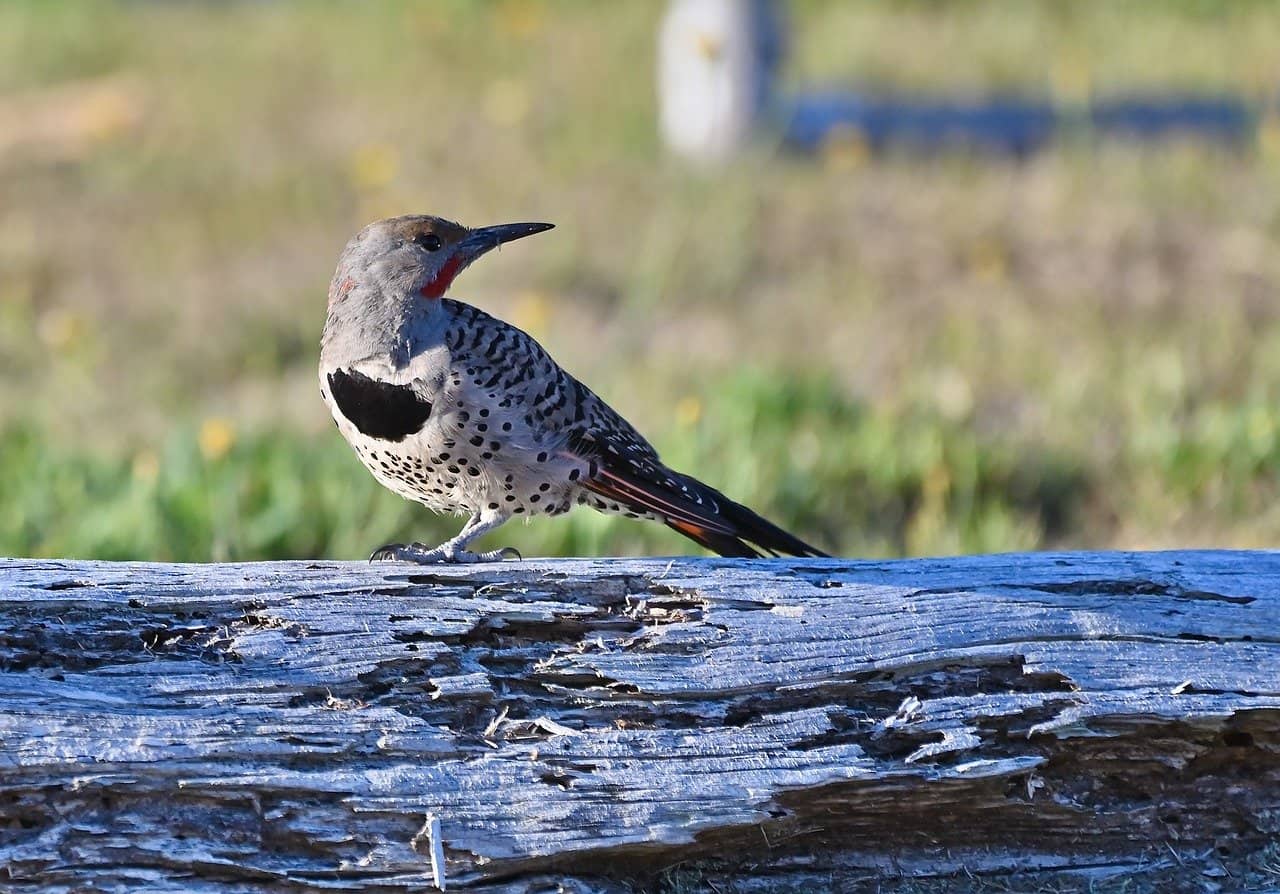
Scientific Name: Colaptes auratus
Wingspan: 17 to 21 inches
Height: 7 to 15 inches
Weight: 4.5 ounces
Northern Flicker woodpeckers are one of my favorites. They have a very unique polka dot pattern on top of their brownish plumage. Another way you can identify Northern Flickers is by looking for a dark patch of feathers right above their chests.
These birds are also different from most woodpeckers here in Southern Carolina as they are the only woodpeckers that migrate. You will see many Northern Flickers migrate back to Canada during the summer.
Here is another interesting fact, Northern Flickers spend a lot of time on the ground. Yes, instead of flying around, these woodpeckers usually walk on the ground in search of food. They can fly, though. They just choose to fly only when necessary.
7. Yellow-bellied Sapsucker
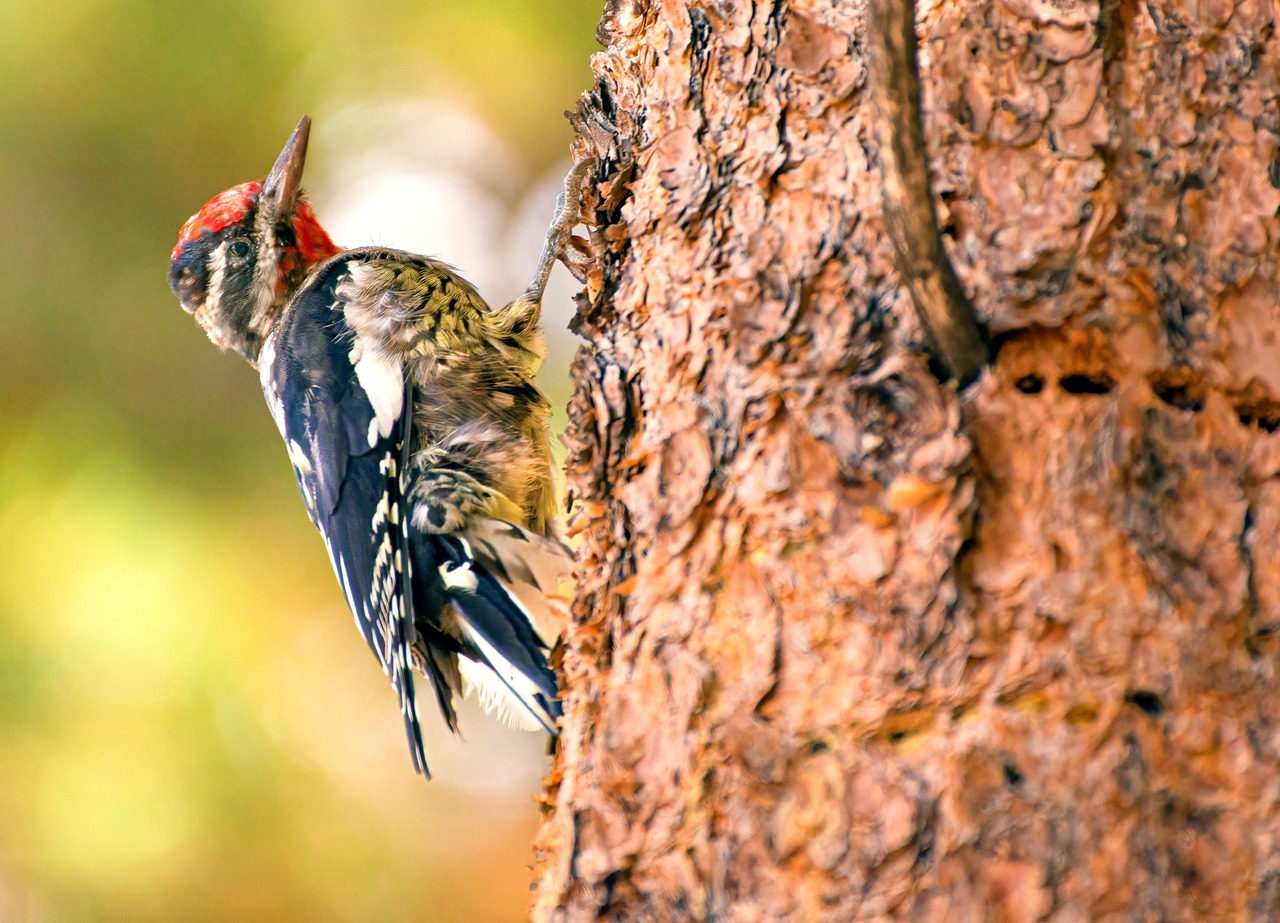
Scientific Name: Sphyrapicus varius
Wingspan: 13.5 to 16 inches
Height: 7.5 to 8.3 inches
Weight: 1.6 ounces
Yellow-bellied sapsuckers are perhaps one of the most aptly named woodpecker species in Southern Carolina. These little birds peck holes in trees to drink the sap.
The star of the show, in this case, is their specialized tongues. They use their tongue to suck out the sap from the tree easily. I quite like these little guys – they are resilient and quite resourceful.
And when they are not poking holes in trees for sap, you might find them in your backyard if you happen to have a suet feeder. I find this behavior quite interesting – the yellow-bellied sapsuckers avoid traditional bird feeders but hang around suet feeders for some reason.
If you want to spot one, your best chance is to look for them during the breeding season. I recommend keeping an eye out for these birds during the springtime, specifically when they are migrating south.
8. Red-cockaded Woodpecker
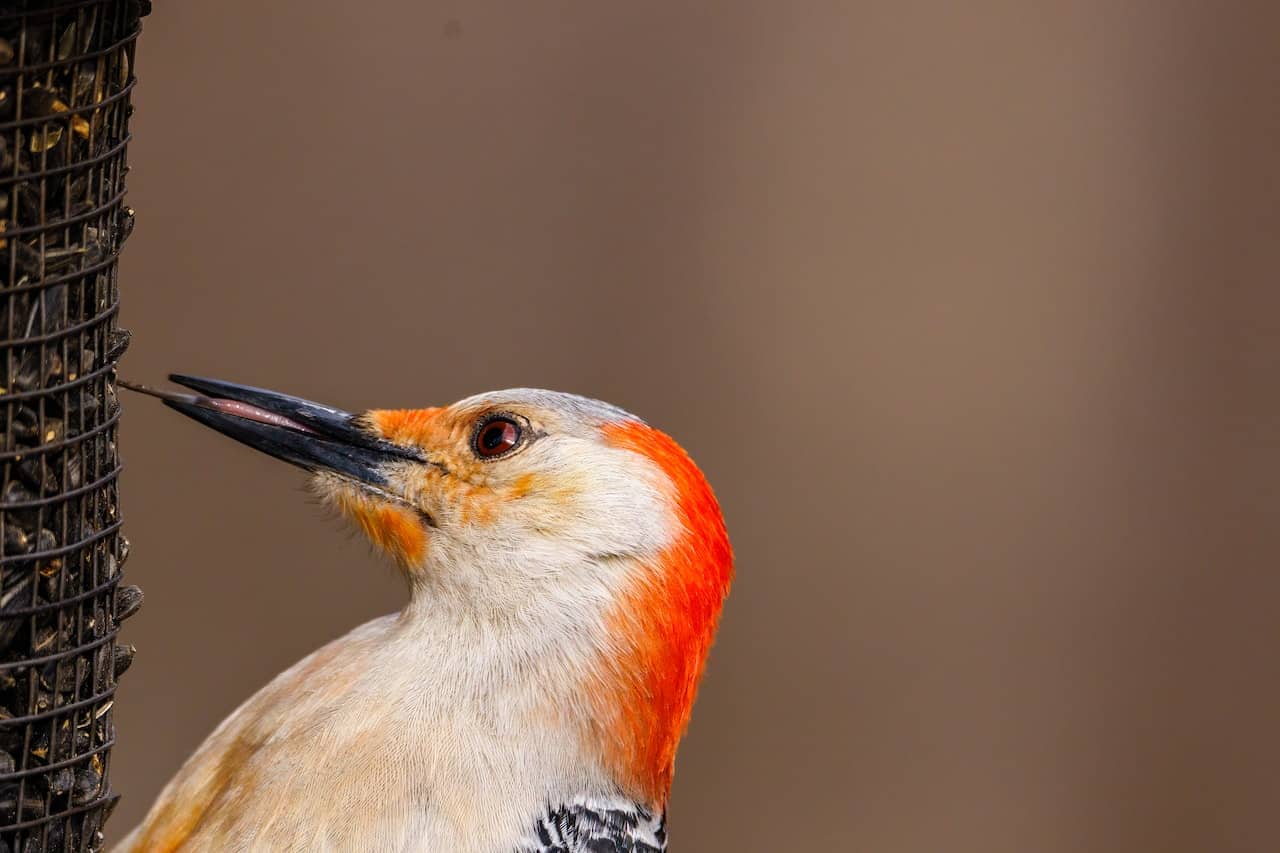
Scientific Name: Leuconotopicus borealis
Wingspan: 15 inches
Height: 7.9 to 9.1 inches
Weight: 1.5 to 1.8 ounces
The Red-cockaded woodpecker is an interesting species of woodpecker. They are named Red-cockaded, but ironically, they have no significant red markings.
Only the males get a smidgen of red at the side of their heads. And that too only during the mating season. Honestly, the red marking is so small that it is very easy to miss completely.
Additionally, these birds have black and white plumage. And their bellies are mostly white. They have white spots on the top of their wings – and in some birds, they form a heart-shaped patch.
Anyway, despite naming conventions, these birds are still very fascinating to me. They are beautiful creatures and have adapted to their habitat perfectly.
The red-cockaded woodpecker lives in natural forests with lots of pine trees. And unfortunately, this is the only species in Southern Carolina that is on the endangered species list, which is something that just breaks my heart.
9. Ivory Billed Woodpecker
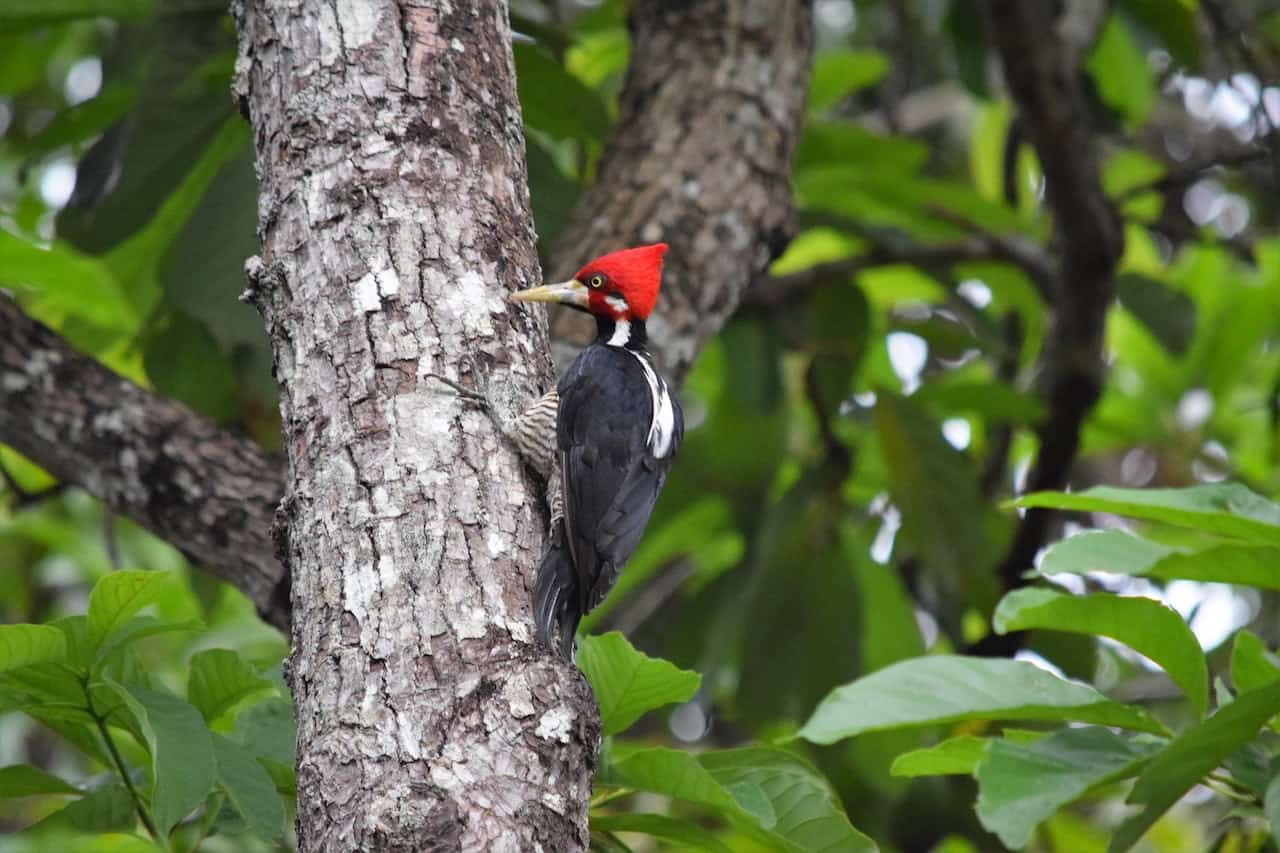
Scientific Name: Campephilus principalis
Wingspan: 29 – 31 inches
Height: 18 to 20 inches
Weight: 15 to 20 ounces
Whenever I talk about the Ivory Billed, I get really excited. They were objectively one of the largest woodpeckers that ever existed. But sadly, these massive birds are now extinct.
How massive, you might ask. Well, their average wingspan was between 29 – 31 inches. That is actually quite large. Speaking of their massive wings, they do not have that much of a pattern.
Ivory Billed woodpecker wings were mostly black. But they had white patches of features at the end of their wings. It was especially visible when the wings were folded.
So, even though the size of these birds is impressive, the most distinctive feature is their ivory-colored bills. In fact, that is where they get their name from.
Their striking bills, along with a bright red crest, gave them a very distinctive and majestic look. It really is a shame that you cannot see these birds anymore.
When Are Woodpeckers Spotted in South Carolina?
There are different species of woodpeckers you can find in South Carolina. And you can spot them throughout the year. But some species are easier to spot during warmer seasons when they are actively seeking out food.
Another great time to spot one is during breeding season or when they are migrating. But common species in South Carolina, like the downy or pileated woodpecker, are easy to spot all year. You might even get lucky to see one on your lawn or backyard.
Conclusion
South Carolina has so many different species of woodpeckers it is quite hard to miss one. The real fun is when you spot one and can tell exactly which kind of woodpecker it is. If you want the best chance to spot woodpeckers in South Carolina, look out for them during the warmer months. You are most likely to spot many different species during this time.

